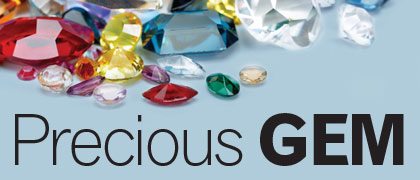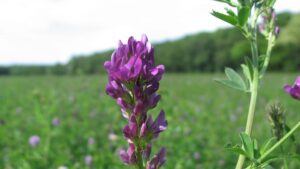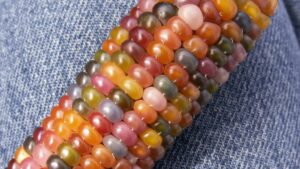Scientists use cutting-edge technology to diversify corn germplasm for breeding programs around the world.
It might be one of the seed industry’s best-kept secrets. For more than 20 years, the Germplasm Enhancement of Maize (GEM), a project funded and managed by the U.S. Department of Agriculture’s Agricultural Research Service, has been working to reduce genetic vulnerability of corn and to provide genetic improvements that increase productivity or end-use characteristics for food, feed, fuel and industrial purposes.
GEM researchers use unadapted exotic germplasm to introduce new genetic diversity with the goal of improving trait performance and minimizing production risks. To date, the project and its collaborators have released 265 germplasm corn lines, seven of which were released this year.
“One key to delivering superior genotypes to the industry is being able to work with the public and private sectors in the industry — not only in the United States, but also internationally,” says Candice Gardner, GEM research leader for the North Central Regional Plant Introduction Station in Ames, Iowa, and acting GEM coordinator. “It’s challenging, in terms of exchanging germplasm, but also exciting.”
Walter Trevisan, an international corn breeding advisor for Water Efficient Maize for Africa (WEMA) and GEM Technical Steering Group chair, adds that GEM has the ability to work with germplasm that many companies would not consider and don’t have the patience for. “We have found tremendous potential in this germplasm,” Trevisan says, noting that this work has the potential to help many other areas of the world, including Africa where close to 1 billion people depend on maize as a staple food.
These genetic improvements and reduced vulnerabilities enhance the value of maize for farmers and end-users. “It truly is a collaborative effort between the USDA-ARS and public and private research scientists who use exotic, public and proprietary germplasm to identify favorable alleles that increase genetic diversity and improve product performance,” Gardner says.
End-users aren’t the only ones that benefit from GEM. The project also provides graduate students with the technical capabilities, data and knowledge necessary to enter the industry. “We are very proud to be part of the training ground for many students, and indirectly helping to train the next generation of plant breeders,” Gardner says.
Major Goodman, North Carolina State University’s William Neal Reynolds Distinguished University Professor of Crop Science and former Raleigh GEM coordinator from 1995 to 2007, believes that anyone in the U.S. who breeds corn lines is probably already a member of GEM, which he sees as an added benefit to the program. “GEM brings long-term continuity to corn breeding, but in many ways GEM is philanthropic — it works best for member companies by allowing others to manage it,” Goodman says. “There is no other program quite like GEM.”
Today, Goodman uses GEM, stressing that it’s truly an invaluable resource for sourcing and sharing corn germplasm.
Searching for Treasures
Products of the GEM project include new sources of germplasm, which are available to researchers free of charge through the North Central Regional Plant Introduction Station. Released germplasm has immediate utility for incorporation into corn breeding programs. Currently, personnel are working on the:
• Characterization of germplasm for agronomic performance and traits.
• Breeding methodology to enhance unadapted germplasm.
• Value-added traits for additional research applications.
GEM personnel are also tasked with managing the Allele Diversity Project, which takes materials that are extremely unadapted and impossible to use in normal line development, backcrosses them to adapted lines, such as PHB47, and provides new, adapted materials that can be readily evaluated for traits, such as disease resistance. Although the work is labor-intensive, Gardner says the benefits are worth it.
“We are able to provide more assurance for agricultural productivity,” she says. “All of the germplasm that is released by USDA-ARS project participants and most of the university participants is unencumbered by intellectual property rights.”
Goodman adds that the project has been instrumental in offering highly diverse properties within germplasm. “The program helps to look at what might be coming down the road and can take a long-term approach to developing new germplasm to fight what might affect crops 10 years from now,” he says. “For instance, if a new corn disease is found in another country, how long will it take before that disease is in the United States? This program helps to bridge that gap.”
Gardner agrees with Goodman, saying it’s more important than ever to find new genomic tools to identify alleles within trait germplasm to protect plants from upcoming disease pathotypes that are found in fields domestically and abroad.
Goodman has also been using the Allele Diversity Project to help find dominant genes that block pollen. Thanks to the project, he has found about six sources that look promising.
Newer to the GEM program are inbred lines developed with double-haploid technology. “The key is that we still want to release lines that are not fixed inbreds but also offer
double-haploid technology if that’s what a public or private entity needs,” Gardner says.
The USDA-ARS GEM project and Iowa State University’s Doubled Haploid Facility have collaborated as part of the GEM Allele Diversity project and to date have released 205 double-haploid lines with the anticipation of another 2,800 lines to be created and released during the next 10 years.
GEM Extends Treasure Hunt
When it comes to value-added traits in corn, Trevisan’s 42 years of breeding experience has taught him that there needs to be further development for quality, texture and disease resistance.
“There are premium markets for specific qualities of corn,” Trevisan says. “For example, some countries in Europe prefer harder orange flints for morning cereals, while others like their polenta to have a certain color and texture that only the orange flint corn can give. Argentina has profited for a long time by supplying these needs. Researchers around the globe will need to pay more attention to these attributes if they want their products to be widely accepted. This research into new germplasm can open new markets … premium markets for producers.”
While much of GEM’s work is done from facilities in Ames and Raleigh, interest from research hubs grows. Currently, the University of North Dakota conducts an early-season GEM program to develop northern-tier corn lines, while Texas A&M University releases new lines with drought and insect resistance.
Meanwhile, communication continues with GEM members and African partners to start GEM Africa. “We have grown to the point where we have international reach,” Gardner says.
Shannon Schindle
 |
For more information about the Genetic Enhancement of Maize project, visit www.public.iastate.edu/~usda-gem/GEM_Project/GEM_Project.htm. |
|
The Origins of GEM Since its inception in 1993, public and pr It started with an initial $500,000 in 1995 and today GEM funding annually exceeds $1.3 million. The project is run from two primary locations — Ames, Iowa, and Raleigh, North Carolina. The Ames location develops 25 percent tropical (exotic) and 75 percent temperate germplasm and the Raleigh location develops 50 percent tropical and 50 percent temperate germplasm. In 2013, GEM celebrated its 20th anniversary. Through the years, several public and private entities, from seed companies to universities have become GEM members. In the U.S., GEM members comprise 28 private and 21 public entities. Internationally, GEM has nine private and five public members. It’s this cooperation and support that have allowed GEM to grow to where it is today, a respected and highly-valued source of corn germplasm, explains Candice Gardner, acting GEM coordinator since Mike Blanco retired in June. Even non-members have free access to GEM germplasm two years after a new line is released. “It’s all about sharing and access, but we also try to integrate and work with our members,” Gardner says. “Through in-kind support, we are able to continue to provide unadapted germplasm in an adapted format. Our members provide excellent guidance by suggesting germplasm that can be accessed so that GEM can add to its resources.” GEM leaders stress that had it not been for individuals in the U.S. seed industry back in the 1990s, GEM would likely not exist today. “The industry knew that there was a need for diversification and future corn research,” Gardner says. “It’s their efforts that have enabled GEM’s achievements and growth to where it is today.” |














